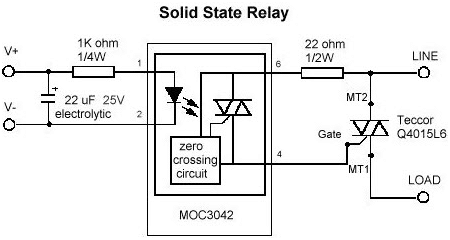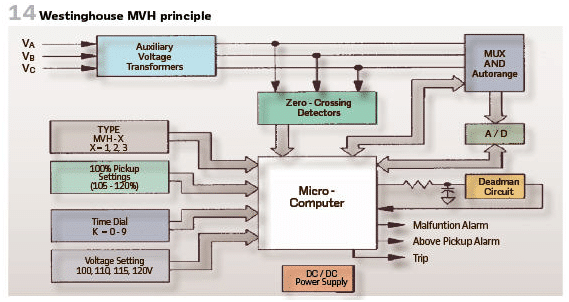
We thank him for bringing more knowledge for our electrical engineering community.
If you want to do the same, please send us your articles by mail.
What is a power protection system?
A system which is responsible for protecting electrical systems from faults by isolating the faulty part from the rest of the system, so power is not disconnected from healthy parts and this increases system reliability and efficiency.
The devices used to implement the protection scheme are called protection devices. The devices used to implement the protection scheme is called protection devices and we will mention them and what is the role each one does as follows.
Components of protection system
Current and Voltage Transformers: to get measurements of current and voltage for the protective devices to be able to operate in proper way. The selection of CT & VT should consider step down ratio and maximum current to prevent core saturation not to get false readings.
Circuit Breakers: are the most powerful devices in the system as they are responsible for closing/ opening the system based on relays command which will be discussed in the next few lines.
Protective Relays: are the brain of a protective system, they use the measurements from CT and VT to check whether the system is working properly or there is some kind of fault. In case of faults the relay sends a trip signal to one or many circuit breakers to disconnect the faulty part from the rest of the system. There are many types of protective relays as follows:
- Mechanical Relays: it contains electrical, mechanical and magnetic. It’s used for AC and DC systems and according to the current flowing in its coil, a magnetic force is produced causing the relay to send a trip signal after a specific time.
- Solid State Relays: it replaces the mechanical parts by electronics devices such as diodes and thyristors. These relays have some advantages over mechanical ones considering the speed and no need to be calibrated periodically.
- Hybrid Relays: a composition of mechanical and solid state relay to get the advantages of both of them.
- Digital Protection Relays: these relays implement a microprocessor unit that can be programmed to detect many faults and give priority to the most dangerous faults. This relay is famous for its speed and reliability. One of the strengths about digital relays is the ability to have history for the power system by recording the faults and storing them into memory or send them over communication bus to the control station.

Figure.1 Solid State Relay | image: elprocus.com
Batteries: they are very important in any protection system as they are the backup supply for protective devices so as to be able to operate even in case of power loss.
Communication channels: connectivity between power system and protective devices is so important to make the whole system visible to each other. And to make the proper decision based on the status of systems’ devices.

Figure.2 Computer Based Relay | image: pacw.org
After having an overview about the components of protection which can be implemented to protect the system from many faults, now we mention the most severe faults which can occur in any electrical system.
Types of electrical protection
- Overcurrent protection
- Over and under voltage protection (under voltage is specially for motors)
- Earth fault protection against leakage current.
- Over and under frequency protection.
- Distance protection (for transmission lines).
So as the protection system implements many protective devices, we need to have a look and study on something very important which called coordination. As without the coordination study, our system will be useless.
Protection coordination
It’s the process of determining the best timing and which device to operate to prevent large sections of the system to be out of service. In the past the coordination was done by log –log papers by drawing the current – time curves one above the other to be able to determine which one is going to trip first and so on.
The best practice is to divide the system in many protective zones (transmission lines, generators, substations and etc…). Each zone should be overlap with the neighboring one so the system is fully covered and protected by the protection system.
Finally the governing point is the performance measures. In other words, how correctly the system will work when it’s supposed to operate, which is called the reliability and dependability.
Also the cost versus performance is an important factor. So when designing a protection system we need to have firstly an overview about the system and then go deeply into each system element to make the best choice and practice of protection system.
Thanks for reading,
Yasser.
Do you have more to share with the community about this topic?
This information is very useful. Thanks for sharing.